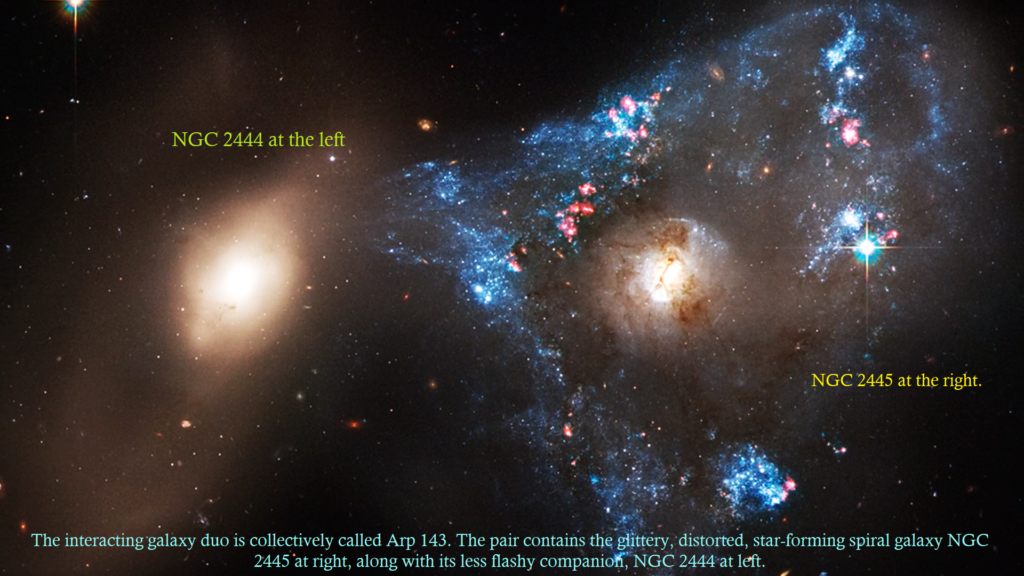The Hubble Space Telescope captured a spectacular image of a galaxy merging process and a turbulent combination of star formation and tidal distortion caused by the gravitational interaction of two galaxies. According to NASA, this image was captured during a series of Hubble Observations to explore the strange and wonderful galaxies found by the Galaxy Zoo Civil Science Project. This remarkable observation contains the fusion of two galaxies in the distant universe to form a mass of dust and bright rolling stars.

This Arp 143 interacting galaxy duo holds the distorted, star-forming spiral galaxy NGC 2444 at the left and NGC 2445 at the right. Astronomers say both the galaxies passed through each other, making this unique triangular-shaped star birth firestorm. Because NGC 2445 consists of rich gases, which is the fuel of star formation, it can hold thousands of infant stars and hasn’t escaped its partner’s gravitational clutches.
According to NASA, ‘The pair is waging a cosmic tug-of-war, and NGC 2444 appears to be winning. The galaxy has pulled gas from its companion, forming the oddball triangle of newly-minted stars.’ If we study head-on galaxy collisions like this, we could clearly understand the origins and evolution of ringed star formation in galaxies.
Know More about the New Hubble Image of IC 2431

The object 681 million light-years away is shown in the new Hubble image – called IC 2431 – This is not a galaxy. They are coming together for giant galactic conjunction that can create a massive universe, bearing the scars of its catastrophic collision. Such objects can help us understand how huge galaxies have grown and evolved over millions and billions of years and how our universe will continue to change in the coming ages.
Know More Interesting tweets about the Hubble telescope.

Read more: How was the first image of HD 84406 Star captured? See the First selfie of Webb telescope